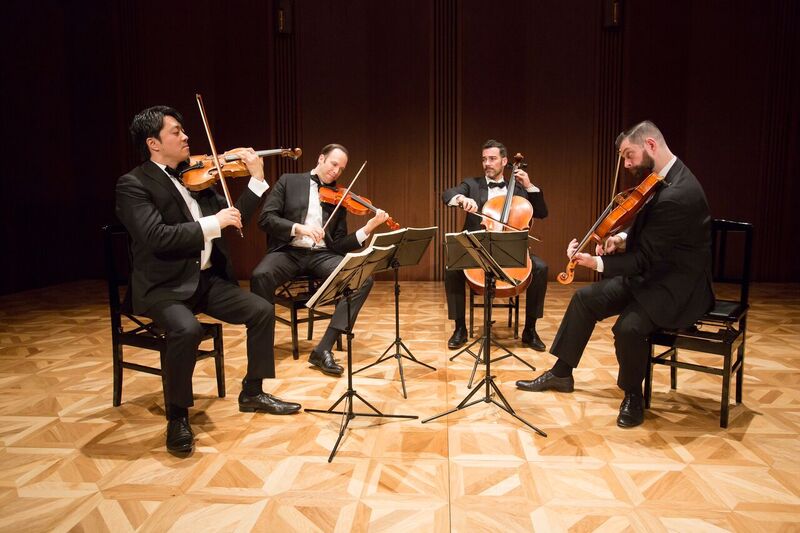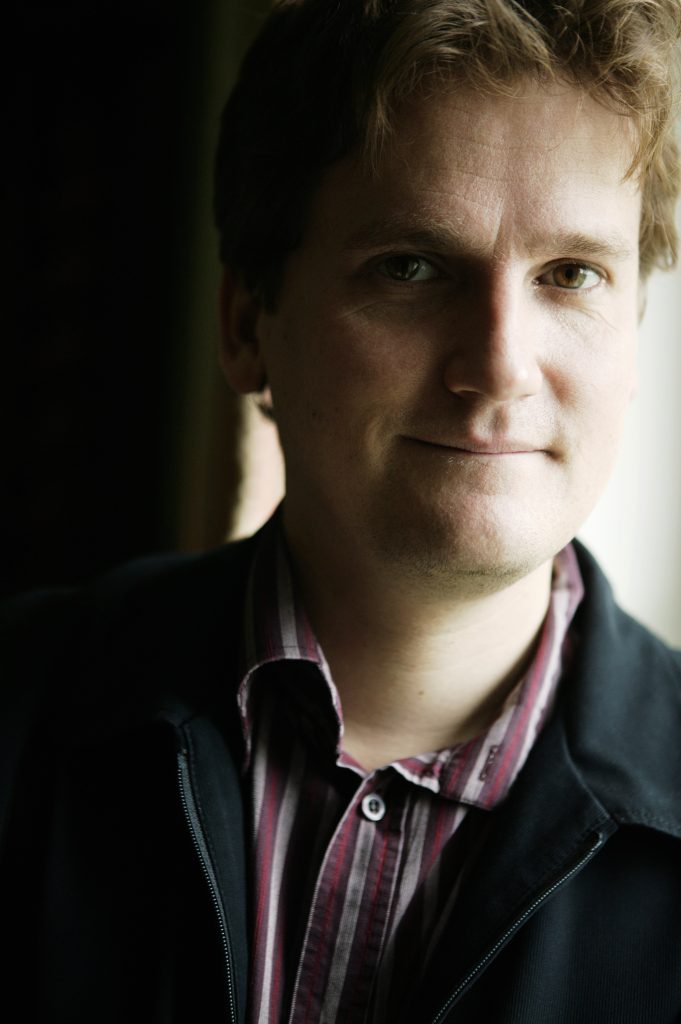Olli Mustonen–from Finland with Love
Although festival planners pray for new music that is both striking and audience friendly, finding that enviable combination is always a challenge. That may explain the confident enthusiasm with which SummerFest Director Cho-Liang Lin introduced Finnish composer Olli Mustonen to Sunday’s SummerFest audience at UC San Diego’s Conrad Prebys Concert Hall.
Mustonen’s Nonet II for nine strings, composed in 2000, opened the concert on a mysterious note, with tiny two-note iterations sounding alternately in low and high tessituras. But the second movement, Allegro impetuoso, asserted itself with volleys of brash, energetic themes surrounded by more fragmented iterations. If the serene slow third movement suggested meditative stasis, the Vivacissimo finale compensated with ecstatic, muscular exultation. Mustonen’s clear structures and his idiom, his own style cocktail of minimalism and contrapuntal modernism, easily won praise from the SummerFest audience.
Miró Quartet: Daniel Ching, William Fedkenheuer, Joshua Gindele, John Largess [photo (c) Suntory Hall]
On Saturday’s SummerFest program, Inon Barnatan and the Miró Quartet gave us a substantial and gratifying account of the Dvořák Piano Quintet, Op. 81, but Mustonen’s Piano Quintet revealed Miró’s consummate ability to communicate complex and even aggressive textures without sacrificing their radiant and immaculately balanced sonority.
Between his own compositions, Mustonen played two Beethoven Sonatas, the familiar “Appassionata,” Op. 57, and the A Major Sonata, Op. 2, No. 2. Compared to the typical concert artist’s approach to Beethoven, Mustonen’s interpretation was over the top: bright, percussive attacks for the primary thematic ideas, athletic articulations, and extreme dynamic contrasts. His propulsive, aggressive Beethoven delighted some and shocked others—to judge by remarks exchanged at intermission—but I found refreshing clarity and insight into his interpretation.
I would compare his approach to Beethoven to the way Hélène Grimaud plays J. S. Bach on the concert grand. But while we more easily grant the necessary transformation that Bach’s keyboard music, which was written for either clavichord or harpsichord, must undergo on piano, we can easily forget that playing Beethoven on a modern 9-foot concert grand piano is also an act of transcription. Because the pianos for which Beethoven wrote had none of the dynamic capability, the resonance, or the brilliant attack that today’s pianos have. The modest fortepianos at the turn of the 19th century, when Beethoven wrote these sonatas, sounded as different from today’s concert grands as a harpsichord does.
A Finnish-American colleague of mine once remarked to me, “You can always tell a Finn—you just cannot tell him much!” Certainly, no one told Mustonen how he was supposed to play Beethoven, and if they did, I am glad he ignored their advice.
This concert presented by the La Jolla Music Society’s SummerFest was performed on Sunday, August 6, 2017, in UC San Diego’s Conrad Prebys Concert Hall. The summer music festival continues through August 25, 2017.

Ken Herman, a classically trained pianist and organist, has covered music for the San Diego Union, the Los Angeles Times’ San Diego Edition, and for sandiego.com. He has won numerous awards, including first place for Live Performance and Opera Reviews in the 2017, the 2018, and the 2019 Excellence in Journalism Awards competition held by the San Diego Press Club. A Chicago native, he came to San Diego to pursue a graduate degree and stayed.Read more…


No observation re the pianist’s physical flourishes?
Nor comments about the soprano’s arm gestures in Saturday’s performance, or Mlle. Kern’s change of costume to upstage the soprano. Oops . . .!
That was Ms. Kern’s little black dress for her role as collaborative pianist.